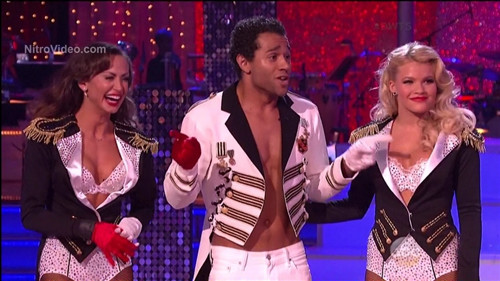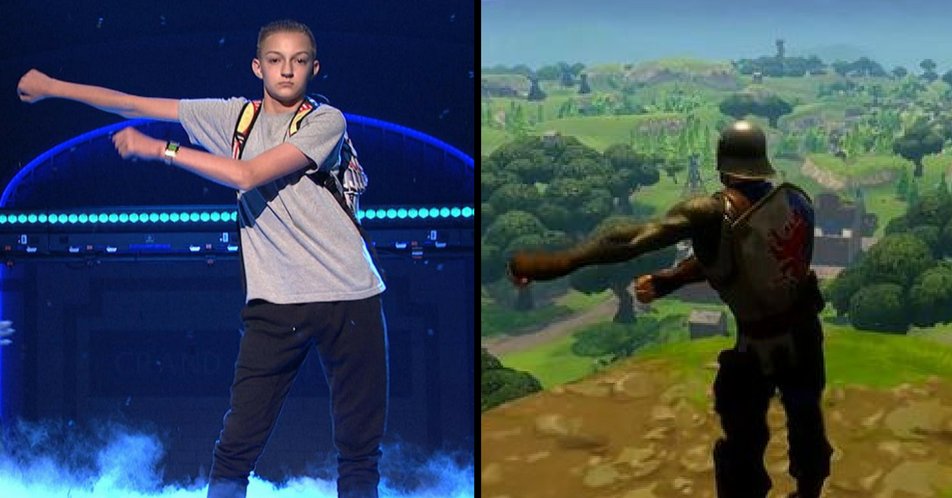Take the lead-teach me how to dance
Take the Lead - Plugged In
Content Caution
–Kids
–Teens
–Adults
Credits
In Theaters
- Antonio Banderas as Pierre Dulaine; Rob Brown as Rock; Alfre Woodard as Principal James; Yaya DaCosta as Larhetta; Laura Benanti as Tina
Home Release Date
Director
- Liz Friedlander
Distributor
- New Line Cinema
Reviewer
Bob Hoose
Movie Review
All right, I admit it. I’m a sucker for Nat King Cole and Ella Fitzgerald, George and Ira Gershwin, and Jerome Kern. The fox-trot and merengue make me smile. Maybe that’s why a film inspired by the true story of Manhattan dance instructor Pierre Dulaine had such initial appeal for me. I figured, what’s not to like about a movie about a guy who teaches kids respect and self-esteem through a graceful discipline? But I’ve observed Hollywood long enough to know that when you run a great idea through the West Coast assembly machine, you always have to be wary of what comes out the other end.
In Take the Lead, Dulaine, a dance academy owner, sees a teen vandalizing a car belonging to his high school principal. Instead of going to the police to report the crime, he approaches the principal the following day with a unique idea. He proposes to volunteer his time and teach her students to ballroom dance. After she stops laughing long enough to breathe, she realizes that he might just fill a need as an unpaid babysitter and sticks him in with the detention kids.
Because of some recent school vandalism, the group of delinquents are being “held” in a room in the school basement. This spacious room will serve Dulaine’s designs perfectly.
The suave gentleman instructor and his sneering students initially mix like fire and gasoline. However, with patience and unwavering determination, he slowly wins them over.
Positive Elements
In spite of the fact that everyone mocks his efforts, Dulaine sees something special in the kids and refuses to give up on them.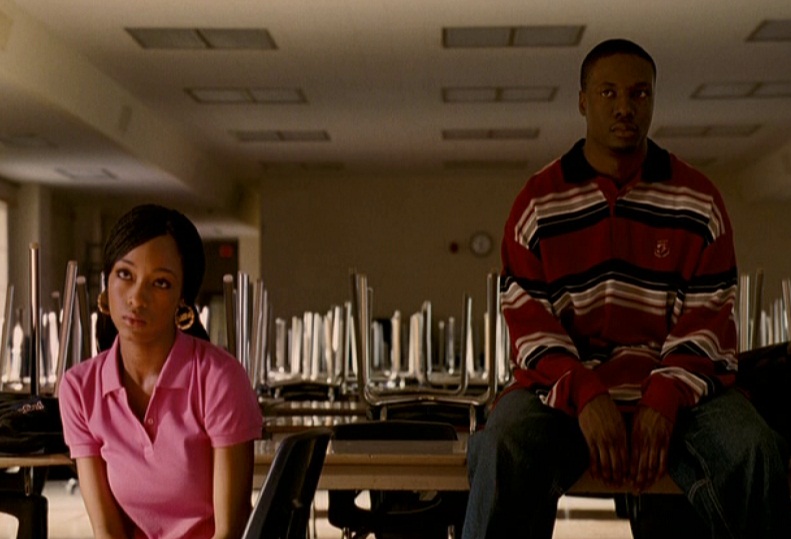 In contrast to the principal, who roams the halls barking orders like a commandant, he shows concern and respect for the students and motivates them to reach for their best. When he encourages them to participate in a ballroom competition, they think he’s crazy. One says, “Only some people get the s— they want!” Dulaine retorts, “That’s true. Those are the people who show up to get it.” Statements like this inspire the kids to give his style of dance a try. With a little experimentation they create a new fusion of his music and theirs (classic jazz layered over urban beats) and give birth to something they all find exciting.
In contrast to the principal, who roams the halls barking orders like a commandant, he shows concern and respect for the students and motivates them to reach for their best. When he encourages them to participate in a ballroom competition, they think he’s crazy. One says, “Only some people get the s— they want!” Dulaine retorts, “That’s true. Those are the people who show up to get it.” Statements like this inspire the kids to give his style of dance a try. With a little experimentation they create a new fusion of his music and theirs (classic jazz layered over urban beats) and give birth to something they all find exciting.
Dulaine also pairs the kids as partners, spurring them to overcome their differences and pull together. For example, two students mend fences after months of blame over a gang death. A couple of guys, competing over the same dance partner, learn to put aside their jealousies and cooperate as a trio. An awkward uptown girl decides to join in and develops meaningful relationships with the ethnic teens even though they’re reluctant to accept her at first. In fact, without regard for crusty social expectations, she invites her heavy-set black dance partner to escort her to her coming-out reception.
In fact, without regard for crusty social expectations, she invites her heavy-set black dance partner to escort her to her coming-out reception.
Later, a group of parents want to shut down the dance classes because they seem pointless in this day and age. Dulaine stresses the fact that developing a discipline teaches the students to trust themselves, respect one another, and find a sense of dignity. (He is so convincing that a parent request lessons, too.) His words are put to the test as the kids face their individual problems and begin to make positive choices. Rock, for example, continues to give his parents money even after he’s been told to leave. Later, he foils a robbery that his gangsta friends are attempting and walks away from his association with them.
In the meantime, a rivalry grows between the poor detention kids and the rich academy kids as they come into contact with each other. But it is resolved on the dance floor when they gain a newfound respect for one another’s talents.
Sexual Content
Larhette, one of the teenage girls from detention, lives with her mom who is prostituting herself. Larhette is babysitting her siblings when her mom and a client enter and walk to the bedroom. Later, a client comes to the door looking for Mom and ends up propositioning Larhette. When she turns him down he grabs her by the shoulders, wrestling and kissing in an obvious attempt to force himself sexually on her. (He is stopped only by Mom’s arrival.)
The steamier moments in the movie are actually dance scenes. An older student from the academy demonstrates a tango with Dulaine for the high schoolers. Her sultry physicality and sensual movements are defined as “sex on hardwood,” which is eminently appropriate. There are cleavage, leg and partial buttocks shots. There are also a few “booty shakes” and crotch grabbing motions that take place when kids grind to hip-hop. During the big ballroom dance-off at the end of the movie, three of the students dance an “improvised” version of a tango that depicts two guys fighting over the sensual pleasures (kissing, full clinching embraces) of their female partner.
Violent Content
When we first meet Rock, he is being coaxed by his gang-member friends to hit a car with a golf club. Though reluctant at first, when pushed he unleashes pent-up rage on the vehicle. When he goes home, he questions why there isn’t food in the house and his drunken father punches him. They tussle and the boy pushes his dad back against the wall. Dad yells at him to leave and not come back.
Later, Rock finds out that the leader of the gang he’s been hanging with is the same person who killed his brother. Rock points a gun at him, but shoots a nearby pipe instead, setting off an alarm. For sparing the thug’s life, he gets punched in the face.
Crude or Profane Language
Take the Lead has foul language scattered throughout, seemingly in an attempt to present us with believable inner-city kids. Included are a dozen uses each of the s-word, “h—” and “a–” (the incarnation of choice being “punk a–“), and two pairings of God with “d–n. ”
”
Drug and Alcohol Content
Rock’s father is an obvious drunk, evidenced by his slurred speech and drunken vomiting. We never see him drink, but a near-empty quart beer bottle is in their fridge. Dulaine has a glass of wine on his dinner table that a student grabs. (The teacher takes the glass back and no one drinks from it.)
Other Negative Elements
At the beginning of the film, gang wars have killed off a number of students including Rock’s and Larhett’s brothers. The kids take all this in stride. They’re used to the darkness of their world just like they’re used to the bump ‘n’ grind of their music, but Dulaine and his polite dancing throws them off kilter. When they’re assigned dance partners, the guys go to great lengths to try to shock the girls. For example, Dulaine asks them to take hands and one girl objects that she doesn’t know where her partner’s hands have been. The kid says, “I’ll show ya,” and shoves his hands down the front of his pants. Another time, Dulaine shows up at class to find an expensive new stereo system in the room. The boys purport to have “borrowed it.” They’re not very convincing, especially since Rock and his gang have been surreptitiously selling some kind of contraband out of a van.
Another time, Dulaine shows up at class to find an expensive new stereo system in the room. The boys purport to have “borrowed it.” They’re not very convincing, especially since Rock and his gang have been surreptitiously selling some kind of contraband out of a van.
One other unfortunate choice by the moviemakers was to represent the school’s teacher population with a grouchy instructor stereotype who never wants to give the kids a break. The intent was to show a contrast to Dulaine’s enthusiasm, but the result implies that teachers don’t really care about any but the A-level students.
Conclusion
A Tinseltown movie team is such a strange artistic conglomerate. You have producers, writers, a director, actors, crew and corporate execs all tossing in their creative fodder and hoping that the outcome will be something transcending compost. Most often, we end up with a film that duplicates much of what has gone before, which is precisely what happens with Take the Lead.
The concept is not a new one—rough-edged kids are offered a hand up by a caring adult. It’s been played over and over again ever since the classic film Blackboard Jungle. The twist here is the addition of ballroom dancing. A twist which, on the plus side, director Liz Friedlander takes advantage of with polished dance scenes and evocative visuals. Similarly, Antonio Banderas creates a compelling, debonair instructor who we want to root for.
But from there, Take the Lead has only two left feet. It relies heavily on typecasting and scenarios from various films of the last decade—the white kid who thinks he’s a “playa,” the hot-headed brooder with a drunken father, a class full of rejects who suddenly turn a corner and dance like Juilliard grads—instead of the original story’s natural charm.
Add in a larceny-minded gang leader and a prostitute mother. Then turn up the sensual thermostat and you have the same ol’ song and dance instead of a graceful twirl ’round the ballroom floor.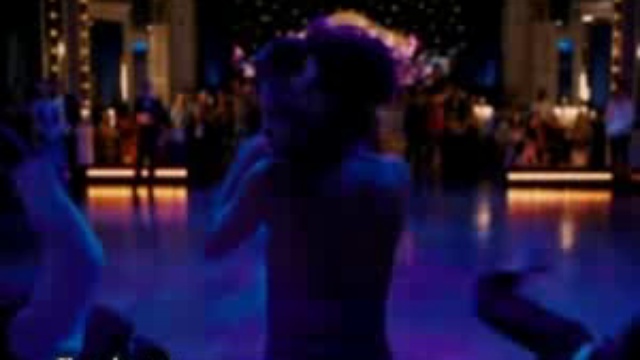
PluggedIn Podcast
Parents, get practical information from a biblical worldview to help guide media decisions for your kids!
Learn More and Subscribe Here!
Back to Top
Bob Hoose
After spending more than two decades touring, directing, writing and producing for Christian theater and radio (most recently for Adventures in Odyssey, which he still contributes to), Bob joined the Plugged In staff to help us focus more heavily on video games. He is also one of our primary movie reviewers.
More by Bob Hoose
Latest Reviews
Back to Top
12 Ways Partner Dancing Taught Me How To Take The Lead In Relationships And Be A Man
I started going to drop-in dance classes to meet people and improve on the masculine traits I was lacking. I heard it was a good way to learn how to lead and be more assertive, which I lacked as a typical nice guy.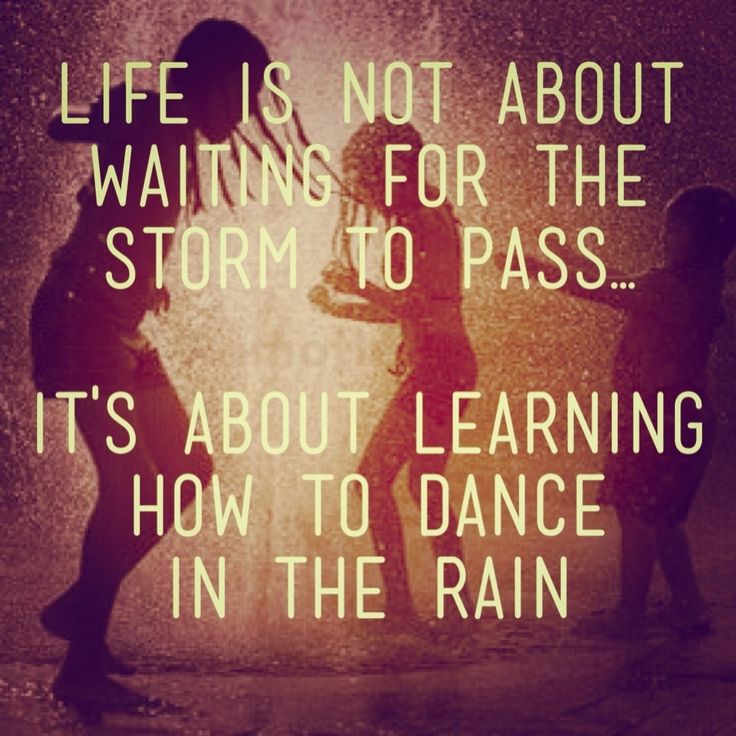 But man, I learned so much more.
But man, I learned so much more.
Fast forward a couple years, I have now done several classes of Salsa, Bachata, Tango, Ballroom, Cha Cha, Country Line Dancing, Swing, and Lindy Hop.
Here are some lessons I learned in being a man from these partner dances:
1. You Can Lead With Subtle Actions
You can tell the girl what you want to do with small movements. You don’t have to make big movements, get aggressive or forceful, or talk. A big myth about leading is that you have to use big, forceful movements — maybe in some forms of dance, but definitely not for Latin forms, like salsa and bachata. I learned that as a leader, your goal is to send a signal that the follower responds to. That’s it. To send the right signal, you don’t have to be pronounced. With a strong frame and rigid posture, just a small indication is often enough to tell her what you want.
2. You Have To Be Clear and Decisive
If you aren’t clear and firm with what you want, the girl will get confused.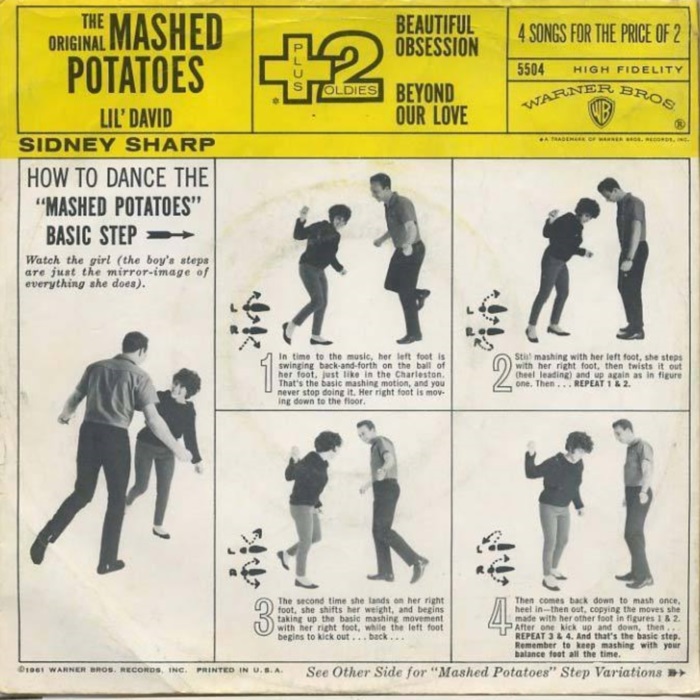 In dancing, this applies to when you want her to turn and what turn you want her to do. In relationships, this applies to setting your own boundaries and doing stuff that interests you.
In dancing, this applies to when you want her to turn and what turn you want her to do. In relationships, this applies to setting your own boundaries and doing stuff that interests you.
Move with purpose. Walk straight towards the girl if that’s where you want to go. Take purposeful strides. Move with your chest. Move confidently.
I’ve caused a girl to do the wrong thing and confused her numerous times by being unclear with my hand movements or not fully deciding in my mind what I want her to do in time and throwing out a movement that was half-hearted.
I learned this especially in Argentinian Tango class. It is especially scary since this dance requires you walk into your partner as she walks backwards. This made me timid because I didn’t want to step on her feet but the dance requires confidence and trust.
I was constantly scolded by my partner to be confident enough to take assertive steps forward with no fear.
3. Leading is Essential. Leading Is Not Controlling.

When it comes to partner dancing, the girl has to follow your lead. Without your lead, she doesn’t know where to go or when to spin. You have to decide that.
This almost symbolizes the male-female relationship. As a man, you have to make decisions, lead the women, and protect her from dangers. It’s ingrained in our DNA and culture.
But leading is different from controlling. Leading is all about offering clear decisions of what to do. Throughout the whole process, there are micro-moments when the girl has the full power to reject your offers.
You still have to approach her and ask for a dance, but she can reject your dance request.
You can ask her to turn, but you are not forcing it upon her. It is a gentle, firm request that she has the choice to comply to.
An East Coast Swing teacher told me to let the girl decide how close she gets to you and where she is comfortable. Simply lift your arms. You cannot decide for her or she’ll be uncomfortable. You lead by offering. She decides.
She decides.
4. Relax and Feel the Music
You’re not relaxed even if you think you are. When you’re anxious or scared of rejection, sometimes, it shows through in ways you didn’t detect.
Consciously, I think I’m cool but my body says otherwise. Others see me as tensed up and my shoulders are hunched up. I’ve been told numerous times by girls to relax a bit when dancing.
Take it less seriously and treat it less like baking a cake as if there’s specific steps for every part of the process you must follow. As I got better with dancing, I was told to stop counting the beats out and just feel the music.
Whether it’s human courtship, male-to-female communication, or music, it’s more than just a logical, robotic process you follow. There’s emotion and intuitive feel to it.
5. It Is Your Obligation to Lead
Many times during class, a woman has told me that I need to lead more. They want to be told what to do.
As a nice guy, you may counter with, “But what about female equality?”
Leading is not controlling or demanding. Leading is giving the girl the opportunity to follow and doing it in a clear, masculine way that she understands. You are asking through your body language.
Leading is giving the girl the opportunity to follow and doing it in a clear, masculine way that she understands. You are asking through your body language.
This is about becoming an attractive man with healthy relationships with women. You can still treat a woman with respect and see her as an equal even if you are leading her.
This is about being less shy, manning up, and making bolder decisions.
As far as body language goes, in Tango and Swing, I was told to lead with the chest. The chest is the most important part of leading.
6. Variety Gives You More Experience and Skill
One instructor told me that it’s important to dance with multiple women when you’re starting out to learn how to lead. If you only practice with a single woman, she can naturally have the tendency to take over and lead for you. It’s important to date more than one girl before you marry to learn how to be the man in a relationship.
After a dance lesson, they had a “social dance”.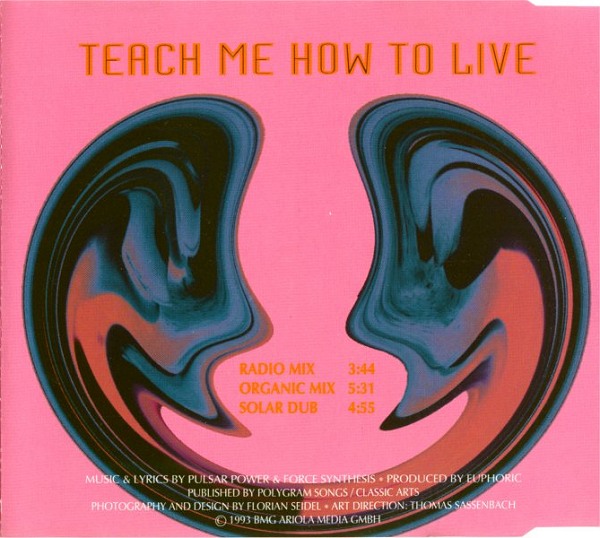 For two hours, they had small snacks and soda. And a hundred old people gathered to dance together as a live band performed. The music was straight out of the 70s. It was the stereotypical stuff you heard in the movie Back to the Future. As I watched them dance, I learned so many lessons:
For two hours, they had small snacks and soda. And a hundred old people gathered to dance together as a live band performed. The music was straight out of the 70s. It was the stereotypical stuff you heard in the movie Back to the Future. As I watched them dance, I learned so many lessons:
I was reminded that the modern world with its rap music, EDM, Dubstep, twerking, and grinding was a very new phenomenon in the grand scheme of things. For thousands of years, we danced in a more intricate and romantic way. Nowadays, a high school’s dance has evolved into one guy awkwardly grinding a girl’s booty (pretty much clothed sex) if you were so lucky and brave enough to ask a girl out and have her say yes. And it’s clear as day that no one there can dance at all.
It’s a bit of a tragedy. (Kind of cool too if you get to be one of those guys). It used to be a place of proper dance with the quality of a live band. As I listened to the singers sing, I was amazed at how sharp, clear, and on-key the melodies were. I love hip hop as much as the next guy, but there was something awesome about hearing a live band who knew what they were doing (that wasn’t just spitting out hard core rap). Speakers and iTunes can only go so far.
I love hip hop as much as the next guy, but there was something awesome about hearing a live band who knew what they were doing (that wasn’t just spitting out hard core rap). Speakers and iTunes can only go so far.
Although I would rather be alive today than any other time in history, I marveled at the fact that this was what was cool not long ago. I really got into some of the songs (by the Temptations and Elvis) and I could see how it was cool. At the same time, I could see how this was a bit whack and wondered if our generation would be the same way when we got old (most likely it will).
7. People Are People, Not Gods
My insecurity with being Asian in a predominantly white environment has plagued me more than it should have my whole life. There are plenty of people who treat me as equals and I have learned that I have to stop sabotaging myself because of this. This usually comes down to staying quiet or not speaking my mind because of a chase for approval.
I’ve pushed my comfort zone and have accomplished stuff others wouldn’t dare do.
I’ve been the only Asian male in a ballroom of 100 elderly white people dancing to Elvis. I’ve danced Zumba as the only Asian male in a gymnasium of 250 black women. They were nothing but friendly to me and my insecurities with my race were in my own head.
Oprah Winfrey, one of my heroes, said in a Stanford Business school Q&A that she never got to where she was by looking at color, even though she was often the only black woman in a room of old, white men.
While I’m not so naive to think that there aren’t bad people out there, that doesn’t mean there aren’t good people too.
I’m very thankful to have brightened some of these older women’s days by dancing with them. Many of these women used to be beautiful when they were young. Now, they don’t get much attention and just want to dance with someone. It’s a bit sad but it got me thinking.
8. You Have To Be More Brave. You Have To Be The Man.
During one of my sessions, an old lady pulled me up and told me I have to be more brave and ask other ladies to dance.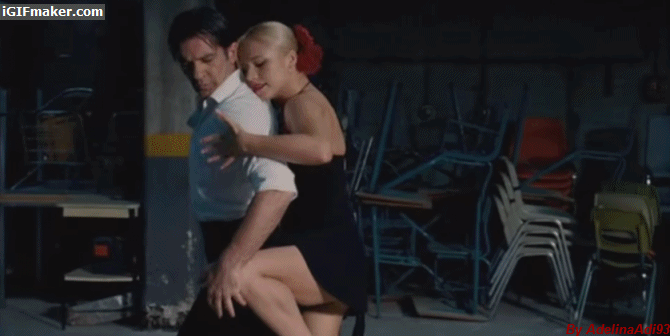 No matter what culture it is, that’s a standard theme. A guy has to be a guy. Stop chickening out.
No matter what culture it is, that’s a standard theme. A guy has to be a guy. Stop chickening out.
There’s some biological and cultural about this standard way of life. It’s been like this for tens of thousands of years. Don’t use feminism or equality as an excuse to sit by doing nothing.
I have noticed an uptick in the amount of women who will ask me to dance first at these open dances after classes, likely thanks to modern ways of thinking. However, it’s still rare and many women still chicken out and it’s up to you to ask.
Otherwise, you can end up sitting there (as I have) for up to an hour without anyone asking you to dance.
You will be rejected occasionally and it may hurt if you take it personally but it’s a part of life. If you don’t do it, you’ll never get ahead. Try not to take it personally.
I’ve found it’s easier through dancing because unlike in a bar setting, they’re rejecting the opportunity to dance (because they’re tired or something else) rather than rejecting you.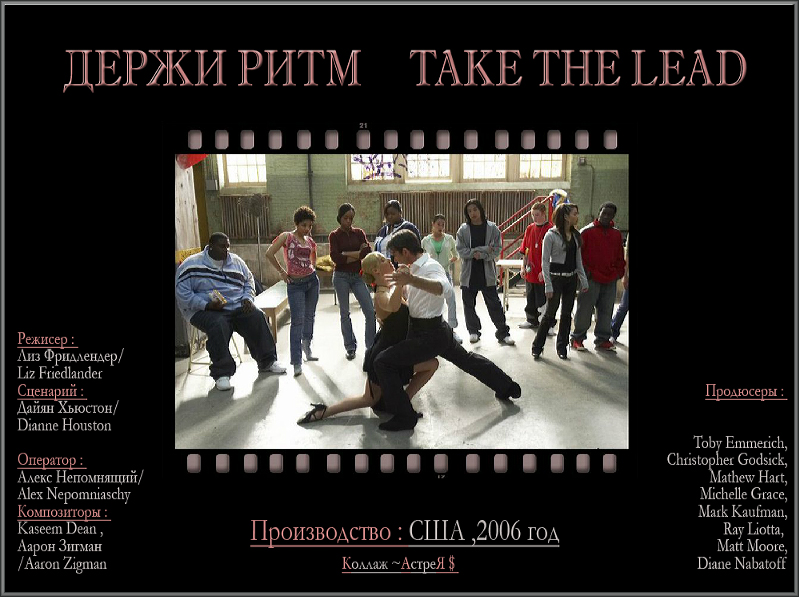
Most of the other guys on the dance floor had complete confidence in asking new girls to dance. Maybe it was that they were all already married. Maybe it was because they came from a different generation.
Observing these older men (and the instructor) interact with women really impressed me. There was an air of confidence (and an undertone of ‘its okay if you don’t want to dance no pressure and I won’t be offended), culture, and willingness to immediately speak their mind without holding back out of fear.
The instructors were always quite good at talking to every woman with no sense of intimidation or fear of judgement or rejection. I would, of course, be a lot different, even with these elderly woman. I have to work on this.
9. Cherish Your Moments
During the open dance after a Swing class, a women told me she hadn’t danced to a certain song they were playing since the 70’s. Wow. The closest thing I could think of to the 70’s is the film, Back to the Future. And that was in the 80’s.
And that was in the 80’s.
There was a lot of history in that room and her statement shocked me out of my negative vibe and urge to complain that everyone there was old except me.
It’s important to cherish your life because it really passes fast. One moment, you’re at dancing at prom, and the next, you’re 80 years old.
I was happy to share that moment with her and the joy she experienced reliving her past with that song. This old lady was young and beautiful once too and there’s a lot you can learn from old women, not just young women.
10. Stop Complaining
Next, I learned one of my most important lessons. To stop complaining and whining. Terry Crews did a video on how he left the NFL and ended up spending too much money and going broke. He ended up having to work a job for $12 an hour but resented it. He kept complaining and moping that he “used to be in the NFL.” This is something I have struggled on and worked on improving my whole life.
I had to learn that the world does not owe me anything. I was not entitled to anything. I do not mope or complain if I don’t get invited to a party or get rejected by a girl or don’t get a dream job handed to me. I am not entitled to anything just because I have done something or worked hard. Like Terry, I had to get up off my butt, stop complaining, and start working towards what I wanted. Even if it was “unfair”.
I was not entitled to anything. I do not mope or complain if I don’t get invited to a party or get rejected by a girl or don’t get a dream job handed to me. I am not entitled to anything just because I have done something or worked hard. Like Terry, I had to get up off my butt, stop complaining, and start working towards what I wanted. Even if it was “unfair”.
I felt a twinge of that again as I stood in front of the snack station. I had a case of horrible attitude. I had to stop thoughts like “these snacks suck. They’re the nameless brand-type with no flavor.” and “Someone is probably having a lot of fun with tons of young hot girls right now.” An elderly lady had enthusiastically pointed me to these snacks and I was not going to be a dick.
Real life is not like the movies or social media feeds. Unfortunately both of those tend to exaggerate how life is and people for some reason love to show off their exotic lifestyles and create a distorted ungrateful perspective for the reason of us. As a core part of personal development, I knew I had to stop out these nasty attitudes and have a better time. This was a REAL party for the generation that was here. You don’t need expensive million dollar bottles and alcohol to have a good time.
As a core part of personal development, I knew I had to stop out these nasty attitudes and have a better time. This was a REAL party for the generation that was here. You don’t need expensive million dollar bottles and alcohol to have a good time.
I looked around and found evidence to support this even more. I saw one couple that were as young as me who for some reason loved swing music and were dancing with these intricate kicks with their feet. I saw another man that looked like he was 80 spinning a young girl (that might have been his granddaughter) around while in a wheel chair. Even though he was in a chair, he was the most enthusiastic person on the dance floor.
I truly believe that a part of having fun is attitude and energy. You can be in a pretty average to mediocre environment and still have a lot of fun with some creativity and enthusiasm. but 99% have chosen (or were programmed) to not believe this, so they assume boring environments are boring. How do I know this? I used to work in a restaurant that got pretty boring at times. My peers would complain about how boring it was most of the time rather than change their mindset.
My peers would complain about how boring it was most of the time rather than change their mindset.
And I’m sure there is someone who is in one of the funnest places he can be on earth but is not having fun because of his attitude
11. You Can’t Lead If Someone Else Is Leading
At these dance sessions, they will usually rotate partners every time so you can practice the movements with a different person each time.
Once in a while, I will meet a girl who will try to lead me through her movements. It’s usually a beginner who doesn’t know that men lead in these dances and it’s especially awkward since the movements are designed so that a woman isn’t meant to lead (Try using an iron grip to force a man to spin you. It’s not natural.)
I don’t mind being lead when I’m learning and need guidance. It’s demeaning when I know the movements well and yet every movement is controlled by someone else.
12. Through Differences, There Are Similarities
I’ve been taught by Latin instructors that came straight from hundreds of years of Hispanic culture. I’ve been taught by old-time American instructors embodying the old American culture of our grandparents. Yet despite the huge differences in the music and dancing, there were deep similarities.
I’ve been taught by old-time American instructors embodying the old American culture of our grandparents. Yet despite the huge differences in the music and dancing, there were deep similarities.
The basic movement patterns were eerily similar. The masculine way the man lead and danced with the girl were similar. The fearlessness and experience of the teachers were the same. They all had “Birthday circles” where the Birthday boy or girl would get to dance with most of the women there. They loved dancing to live bands.
Bonus Tips For Learning How To Lead
If you want to learn how to lead more, I suggest being the follower once in a while. It sounds counter-intuitive and it is. But I’m not alone in my thinking.
Tim Ferriss, a famous podcaster and entrepreneur, has detailed in a blog post and his book Four Hour Chef, how he went from complete beginner to an international Latin dance competitor by learning the female role first.
Dance with an experienced instructor or student and ask him to lead you. This has been one of the quickest ways for me to identify what I’m doing wrong.
This has been one of the quickest ways for me to identify what I’m doing wrong.
You’ll immediately understand, like nothing else, how much clearer his decisions and pushes and pulls are. You’ll understand how much firmer and stronger his actions are: not so much that they’re hurtful, but enough so that they’re clear what is wanted.
I quickly realized that I was being too indecisive, weak, and unclear in my dance movements. My dance partners would be confused if I wanted to turn them or do something fancy. And sometimes, I didn’t know! I would make a half-decision like I’m about to spin her and then, back out of it into a basic step as if that’s what I wanted to do all along. This indecisiveness likely pervades into how I act with others in the real world!
Conclusion
Leading is a core part of being a healthy, attractive male in romantic relationships that is overlooked, underrated, and not taught in school.
While it comes naturally for some men, it doesn’t for most men thanks to numerous modern factors of society, such as classrooms with few male teachers, absent or busy fathers, and electronics that keep you alone rather than interacting with others.
While taking partner classes, like salsa, is not a magic pill to becoming a man, it has helped me become more decisive and lead rather than stay reserved and shy. I still have room to improve but I’m getting there.
Constant practice helps keep you from forgetting and declining.
Dr. Glover, author of the best-selling book No More Mr. Nice Guy and a coach to thousands of nice guys throughout his life, wrote a great article on leading that expands on how to take the lead in a relationship. Has makes a great suggestion to own a dog and taking a dog obedience class to learn to nurture relationships and lead. A bad dog is an indicator of a bad owner. They behave based on how you reward them.
Article by: Will Chou
Will Chou is the founder of willyoulaugh.com helps hard-working Asian American Millennials get rich doing work they love… you can find this article on his site at https://willyoulaugh.com
Are you ready to start dancing? check out STEP N DANCE for Salsa & Bachata Dance Classes
Monarch / Volume 1 / 26.
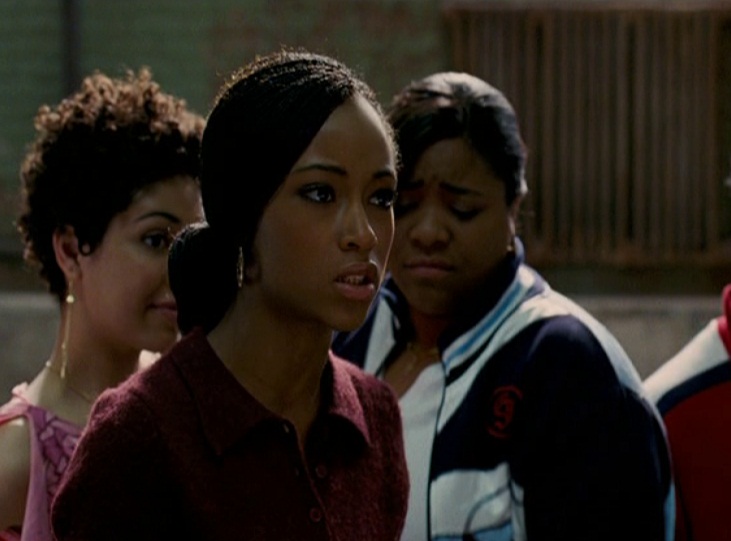 Crossroads VIII
Crossroads VIII I was swimming in the dark again. But this time it was different. I was not immediately thrown back and called to the land of the living. A figure appeared in the darkness. Not a man, but a huge monster. It silently looked at me, glaring angrily at my being.
— Why are you here? it asked.
I wanted to answer that I don't know. That I was not going to appear here, that it is not in my power and not in my understanding.
But I didn't have a mouth to answer. It turned away from me, and I was pulled back into the darkness.
A goblet of water slipped out of my hands and rolled across the floor. Lucius got to his feet in annoyance. “What the hell, Cairn? “But Maya's hand ended up on my arm almost immediately.
"You're pale," she said worriedly, placing her cool hand on my forehead. Her brows tensed. “And you have a fever, I think.
“Vision,” I whispered.
- Bad? Maya asked.
- They are all bad. We must.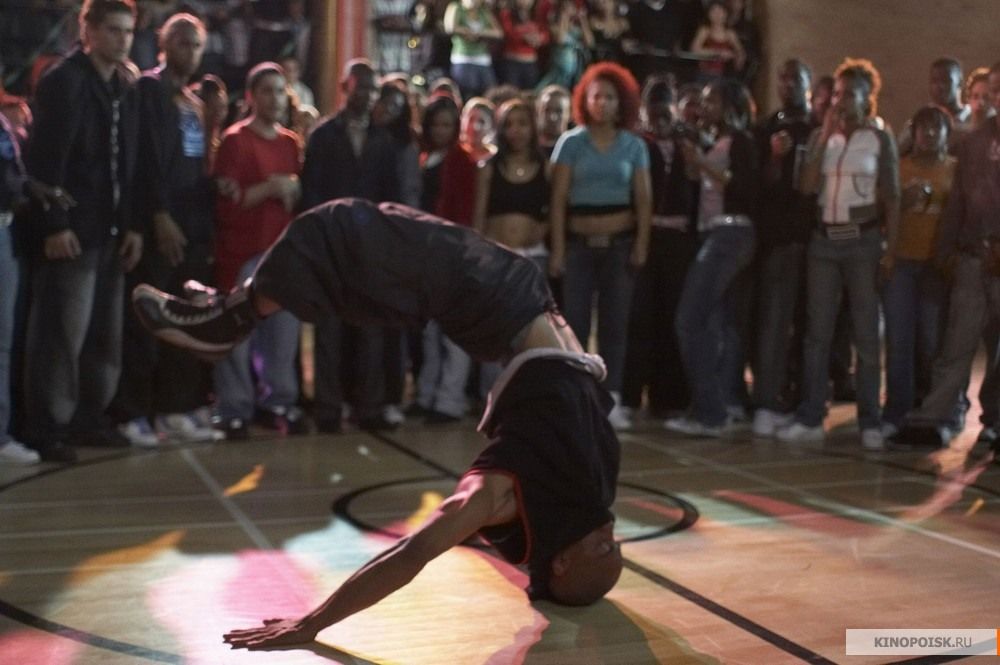 ..
..
But then I stopped. The sounds of the surrounding feast slowly penetrated my consciousness. In fact, we didn't have to leave yet. The moment for panic and adrenaline has passed. Everything was different than with Baryon. The initial period was much closer to the crisis point. I had no days to prepare, only a few hours. I felt the gears begin to turn in my head, the cold wheels of pragmatism.
Sefur, with an arrow in his eye.
I pushed him away.
Orben killed by the mob along with his beloved horse.
I buried him.
Tamara, studded with arrows, killed moments before performing some kind of last rite.
I allowed myself to feel it, if only for a moment. Cold fury swept through me like a hurricane. And then he buried it. He lifted his head and looked around the room. At the table in the corner sat the same short man from the battle and watched me. There was another one sitting behind. Of course, Tota's people were already here. It was logical.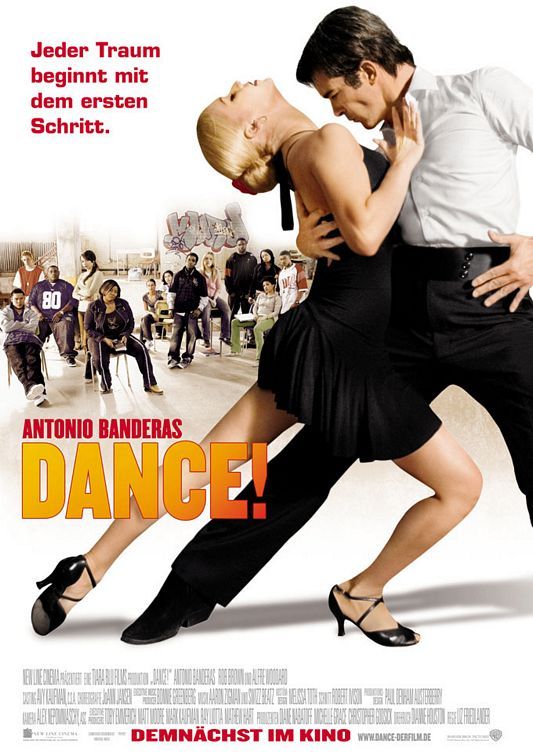
I couldn't afford to panic or show anything that would give me away. Instead, I behaved as usual. Laughing in embarrassment, I reached for my cup, apologizing to the waitress who had come to clean up the mess. I gave her a silver tip. She thanked me in surprise.
- Thank you, my lord!
— Of course, of course, thanks for putting up with my clumsiness. I smiled.
Lucius looked back and forth at me and Maya, and he looked like someone had slapped him.
— What the hell is going on? Lucius whispered.
We are still in the cage, my friend. Still in the cage. I winked at him. His eyes widened in realization. Then he relaxed, and a look of self-satisfaction appeared on his face. It wasn't perfect, there was still some tension on the forehead, but it was close to necessary.
— And how can we get out of this situation, Prince Cairn? Lucius asked. He said my title on purpose. He turned to me, expecting me to take the lead.
Maya's eyes darted from side to side as she scanned the room. I took hold of her chin and tilted my head towards me, just as the adult and loving me did with the blushing girls.
I took hold of her chin and tilted my head towards me, just as the adult and loving me did with the blushing girls.
“Don't panic,” I said, looking into her white eyes, trying to instill calmness, although I did not feel any calmness. To everyone around me, it looked like I was getting carried away. - We are being watched. The situation is difficult, but not hopeless. Now push my hand away and laugh like I just said something very embarrassing.
Maya pushed my hand away and giggled. — Flatterer.
Perfect. It was quite convincing. I moved back to my seat to face Lucius. “Hypothetically, how many guards in this city do you think are loyal to you?”
He shook his head in puzzlement. - All.
— No. Specifically for you. If, say, there was some kind of conflict with your father. - We must pay tribute, his face did not flinch, although a million questions swirled in his eyes.
Lucius thought about it. - Five. Maximum six.
Not much. But better than what it was before. I leaned across the table with barely contained enthusiasm, as if about to throw out a particularly witty remark. Lucius leaned towards me.
I leaned across the table with barely contained enthusiasm, as if about to throw out a particularly witty remark. Lucius leaned towards me.
Wait fifteen minutes to leave after a few dances. Then collect them. Make sure they are near you. We'll need them before midnight.
— What dances? Lucius started to ask, but I already turned around.
There needs to be some gap between Lucius talking to me and his leaving the room. The girl who served was young and pretty, probably sixteen or seventeen years old. But I caught something in the way she lingered beside me, waiting to see if we needed anything else. Possibility. It was perfect. With drunken fervour, I gestured for her to come closer and whispered in my ear.
— Do you see my young friend over there? I asked, pointing at Lucius. He didn't answer, but his eyes were furious and his cheeks were red. The maid tucked a strand of strawberry-blonde hair behind her ear. — Yes, my lord. This is the duke's son.
— Of course you know him. I chuckled to myself. “But my young friend has just confessed to me that his father has not yet hired a man to teach him how to dance.
I chuckled to myself. “But my young friend has just confessed to me that his father has not yet hired a man to teach him how to dance.
The maid blinked. “That's embarrassing, my lord.
— So you agree with me. I called over my shoulder. "She agrees with me, Lucius!" His face was tomato red. If I live to see the next day, then I might have to worry about Lucius going to kill me in my sleep.
— What's your name, girl?
- Millie, my lord.
— Millie, are you thinking the same thing as me? I asked the girl conspiratorially.
We both looked at Lucius, then at each other. Her gaze was piercing. - I think yes.
Can you dance, Milly?
- I can, my lord.
“I'll tell you what.” After rummaging around in my bag, I took out another silver rod and then placed it in her palm. Don't worry about your responsibilities. I'll take full responsibility for distracting you. If a beauty like you teach my young friend how to dance tonight and make sure he has a good time, I'm sure this is something he will remember forever.
— Two or three, what do you think? Millie looked down at her blouse.
- For the sake of Elfion, woman, two. We don't want to give the poor boy a heart attack. I winked at her. She winked back and unbuttoned two buttons on her blouse. I liked Millie, but now I felt a little guilty for having set her on poor thirteen-year-old Lucius. However, this will serve as an excellent excuse for his embarrassed flight.
Millie approached Lucius with mock shyness, then took his hand and dragged him towards the dance floor.
— I assume you had a reason for this? Maya asked dryly.
— Of course! I said, "Come on, let's dance."
Maya's eyes widened. She stood up and took my hand with a big smile, leaning down to whisper. “If I find out it’s a prank, I’ll cut out your liver.”
I winced. “A terrifying threat, but no. — The musicians performed a ballad. I led her in a light waltz, and she easily followed me, never once stepping on my feet, despite her ignorance of the dance. Looks like the clumsiness in the trees didn't extend to other things. At the other end of the hall, Lucius was scowling at me, his face pressed against Millie's chest. I chuckled, against my will to restrain myself.
Looks like the clumsiness in the trees didn't extend to other things. At the other end of the hall, Lucius was scowling at me, his face pressed against Millie's chest. I chuckled, against my will to restrain myself.
- The man at the table behind ours. Another one is on the far left. Do you see them? I twirled her slowly, she looked around the room, then pulled her back into my arms.
“Yes,” Maya said.
I counted them in my head, with difficulty, my memories of the battlefield were confused and hazy. “According to the vision I just had, there are at least fourteen more people, maybe fifteen. In addition, one strong mage. Airbender, I think. And Thoth is here.
Maya turned pale at these words. How does she know where to look for you?
- The devil knows. I turned her towards me. - It's getting worse. I thought of the throbbing pain in my chest, better than when I summoned the flames, but still worse than the first banquet I had experienced. “There is a problem with my magic. Maya backed away, almost stumbling. I gently caught her.
Maya backed away, almost stumbling. I gently caught her.
- When I tried to summon flames in my vision. This brought great pain. Vision was double, and something broke off.
Maya squeezed my arm almost painfully. — Niland. You are describing soul damage. Do you feel pain now?
- A little, yes.
— Why didn't you tell me earlier?
- I didn't understand what it was until... what I saw happened.
"Promise you won't use it again," Maya said firmly, focusing completely on me.
— … I can't, Maya. Not with what comes next.
“You can die.” Maya stepped closer to me. For a moment I lost my composure in her pleading gaze.
It was strange how much my perception had changed from that of a normal person. I was afraid of death, yes. But I also made peace with her. Death is inevitable. But for everyone else, it was an inevitable point. There was no return. I brushed that thought away, not allowing myself to think about Tamara and Sefura again.
- Okay, I promise. How can we fix this? I asked gloomily.
- There is no quick solution. Soul damage is not some simple thing that can be cured with a potion or healed with life magic.” Maya shook her head. “The Enclave can help if they agree to your proposal. Some of your human institutions might help, but I don't know anything about them. I only know the Enclave.
If the infernals decide to help, it will mean that I will begin to cooperate with them, becoming even more indebted. Badly. But it was a long-term problem, and now we need to deal with more pressing matters.
Sefur moved away from the table with Tamara and approached us. Somehow, even in the midst of the banquet, he knew something was wrong. This man's instincts were incredible.
- Can you give this to Sefur? I said quietly. Let him know the general situation. That my magic won't help. Let's meet at the duke's house at midnight.
The music has stopped.
Sefur came up to us and was about to open his mouth when I spun Maya and released her into his surprised embrace.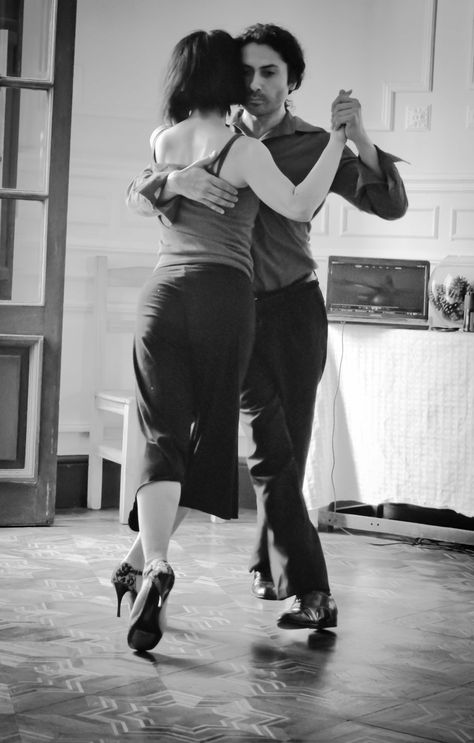
"Uh," said Cephur.
- Teach Maya this dance, will you? I smiled at him. I never liked fast dancing.
I left them and went to Tamara, who was drinking alone at her table. In the upcoming series of events, she played the biggest role.
I was walking down an alley a few streets down from where I first heard the quarrel between the duke and Tota. I was mechanically sorting through two copper rods in my pocket, trying not to think about what I was going to use them for.
Up to this point, everything was going pretty smoothly. With the guards provided by Lucius, the coup went quickly and smoothly, but it was a small town, so that was to be expected. Duke Desiric was being held hostage in his quarters, clearly unhappy with the development of events, but he handed over command of the city guards to Lucius and, by extension, to us. The group was relatively small. The guards were told to go about their usual duties and then meet us at the gate at the appointed time, a little after four in the morning..jpg)
It's been an hour and a half. Teeth chattered in the piercing cold.
Things could go in two different ways:
If Thoth appears first, it will be the worst outcome. Unlikely, but quite possible, since she has shown absolute unpredictability over and over again. In this case, we will suffer losses and flee back to Everwood.
If the thin man comes out first - sent by Tota to find out why the Duke is absent from the meeting - then the game will begin. It was impossible to win against Tota. But on the plus side, Tota didn't seem to want to get involved. She didn't show up at the ambush site, but this skinny man did. If he could separate her from her allies and make the whole thing seem more troublesome than it was worth, that might be enough to scare her away, at least for the time being.
Unfortunately, if everything works out, no one will come out clean. I have not forgotten how all three huntsmen looked at me, there was anxiety and uncertainty in their eyes. Luckily, Maya was there and confirmed the truth of my visions, citing a meeting with Baryon, so they didn't think I was crazy, just...
Luckily, Maya was there and confirmed the truth of my visions, citing a meeting with Baryon, so they didn't think I was crazy, just...
What? Disgraceful? Monstrous?
I didn't know. But it was ok. They didn't see what I saw. It had to be done.
But so far none of them have moved. They both stayed in the house, and I was cold in the alley.
From somewhere far away came the sharp and clear cry of a night lark.
Finally. This is a signal.
I took a few deep breaths to clean myself up and then went outside.
The skinny man stopped. I took off my hood. We stood opposite each other, about fifteen feet apart, with only the moon lighting our faces. I tried not to make sudden movements so as not to frighten him away.
Then he uttered words that at the same time ensure victory and take away honor.
- It's a bit unfair, but I've lived this life before.
Ready translation RE: Monarch / RE: Monarch: 26. Crossroads VIII
I was swimming in the dark again. But this time it was different. I was not immediately thrown back and called to the land of the living. A figure appeared in the darkness. Not a man, but a huge monster. It silently looked at me, glaring angrily at my being.
But this time it was different. I was not immediately thrown back and called to the land of the living. A figure appeared in the darkness. Not a man, but a huge monster. It silently looked at me, glaring angrily at my being.
— Why are you here? it asked.
I wanted to answer that I don't know. That I was not going to appear here, that it is not in my power and not in my understanding.
But I didn't have a mouth to answer. It turned away from me, and I was pulled back into the darkness.
The goblet of water slipped out of my hands and rolled across the floor. Lucius got to his feet in annoyance. “What the hell, Cairn? “But Maya's hand ended up on my arm almost immediately.
"You're pale," she said worriedly, placing her cool hand on my forehead. Her brows tensed. “And you have a fever, I think.
“Vision,” I whispered.
- Bad? Maya asked.
- They are all bad. We must...
But then I stopped. The sounds of the surrounding feast slowly penetrated my consciousness. In fact, we didn't have to leave yet. The moment for panic and adrenaline has passed. Everything was different than with Barion. The initial period was much closer to the crisis point. I had no days to prepare, only a few hours. I felt the gears begin to turn in my head, the cold wheels of pragmatism.
In fact, we didn't have to leave yet. The moment for panic and adrenaline has passed. Everything was different than with Barion. The initial period was much closer to the crisis point. I had no days to prepare, only a few hours. I felt the gears begin to turn in my head, the cold wheels of pragmatism.
Sefur, with an arrow in his eye.
I pushed him away.
Orben killed by the mob along with his beloved horse.
I buried him.
Tamara, studded with arrows, killed moments before performing some kind of last rite.
I allowed myself to feel it, if only for a moment. Cold fury swept through me like a hurricane. And then he buried it. He lifted his head and looked around the room. At the table in the corner sat the same short man from the battle and watched me. There was another one sitting behind. Of course, Tota's people were already here. It was logical.
I couldn't afford to panic or show anything that would give me away. Instead, I behaved as usual. Laughing in embarrassment, I reached for my cup, apologizing to the waitress who had come to clean up the mess. I gave her a silver tip. She thanked me in surprise.
Laughing in embarrassment, I reached for my cup, apologizing to the waitress who had come to clean up the mess. I gave her a silver tip. She thanked me in surprise.
- Thank you, my lord!
— Of course, of course, thanks for putting up with my clumsiness. I smiled.
Lucius looked back and forth at me and Maya, and he looked like someone had slapped him.
— What the hell is going on? Lucius whispered.
We are still in the cage, my friend. Still in the cage. I winked at him. His eyes widened in realization. Then he relaxed, and a look of self-satisfaction appeared on his face. It wasn't perfect, there was still some tension on the forehead, but it was close to necessary.
— And how can we get out of this situation, Prince Cairne? Lucius asked. He said my title on purpose. He turned to me, expecting me to take the lead.
Maya's eyes darted from side to side as she scanned the room. I took hold of her chin and tilted my head towards me, just as the adult and loving me did with the blushing girls.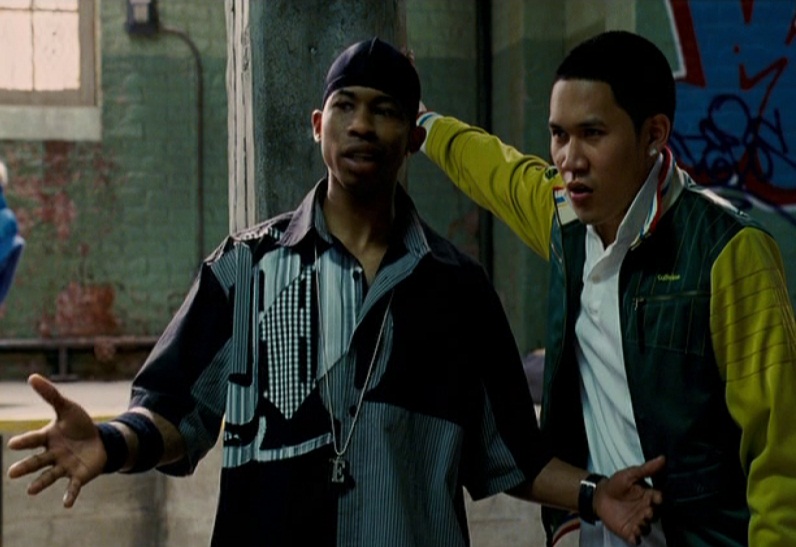
“Don't panic,” I said, looking into her white eyes, trying to instill calmness, although I did not feel any calmness. To everyone around me, it looked like I was getting carried away. - We are being watched. The situation is difficult, but not hopeless. Now push my hand away and laugh like I just said something very embarrassing.
Maya pushed my hand away and giggled. — Flatterer.
Perfect. It was quite convincing. I moved back to my seat to face Lucius. “Hypothetically, how many guards in this city do you think are loyal to you?”
He shook his head in puzzlement. - All.
— No. Specifically for you. If, say, there was some kind of conflict with your father. - We must pay tribute, his face did not flinch, although a million questions swirled in his eyes.
Lucius thought about it. - Five. Maximum six.
Not much. But better than what it was before. I leaned across the table with barely contained enthusiasm, as if about to throw out a particularly witty remark. Lucius leaned towards me.
Lucius leaned towards me.
Wait fifteen minutes to leave after a few dances. Then collect them. Make sure they are near you. We'll need them before midnight.
— What dances? Lucius started to ask, but I already turned around.
There needs to be some gap between Lucius talking to me and his leaving the room. The girl who served was young and pretty, probably sixteen or seventeen years old. But I caught something in the way she lingered beside me, waiting to see if we needed anything else. Possibility. It was perfect. With drunken fervour, I gestured for her to come closer and whispered in my ear.
— Do you see my young friend over there? I asked, pointing at Lucius. He didn't answer, but his eyes were furious and his cheeks were red. The maid tucked a strand of strawberry-blonde hair behind her ear. — Yes, my lord. This is the duke's son.
— Of course you know him. I chuckled to myself. “But my young friend has just confessed to me that his father has not yet hired a man to teach him how to dance.
The maid blinked. “That's embarrassing, my lord.
— So you agree with me. I called over my shoulder. "She agrees with me, Lucius!" His face was tomato red. If I live to see the next day, then I might have to worry about Lucius going to kill me in my sleep.
— What's your name, girl?
- Millie, my lord.
— Millie, are you thinking the same thing as me? I asked the girl conspiratorially.
We both looked at Lucius, then at each other. Her gaze was piercing. - I think yes.
Can you dance, Millie?
- I can, my lord.
“I'll tell you what.” After rummaging around in my bag, I took out another silver rod and then placed it in her palm. Don't worry about your responsibilities. I'll take full responsibility for distracting you. If a beauty like you teach my young friend how to dance tonight and make sure he has a good time, I'm sure this is something he will remember forever.
— Two or three, what do you think? Millie looked down at her blouse.
- For the sake of Elfion, woman, two. We don't want to give the poor boy a heart attack. I winked at her. She winked back and unbuttoned two buttons on her blouse. I liked Millie, but now I felt a little guilty for having set her on poor thirteen-year-old Lucius. However, this will serve as an excellent excuse for his embarrassed flight.
Millie approached Lucius with mock shyness, then took his hand and dragged him towards the dance floor.
— I assume you had a reason for this? Maya asked dryly.
— Of course! I said, "Come on, let's dance."
Maya's eyes widened. She stood up and took my hand with a big smile, leaning down to whisper. “If I find out it’s a prank, I’ll cut out your liver.”
I winced. “A terrifying threat, but no. — The musicians performed a ballad. I led her in a light waltz, and she easily followed me, never once stepping on my feet, despite her ignorance of the dance. Looks like the clumsiness in the trees didn't extend to other things.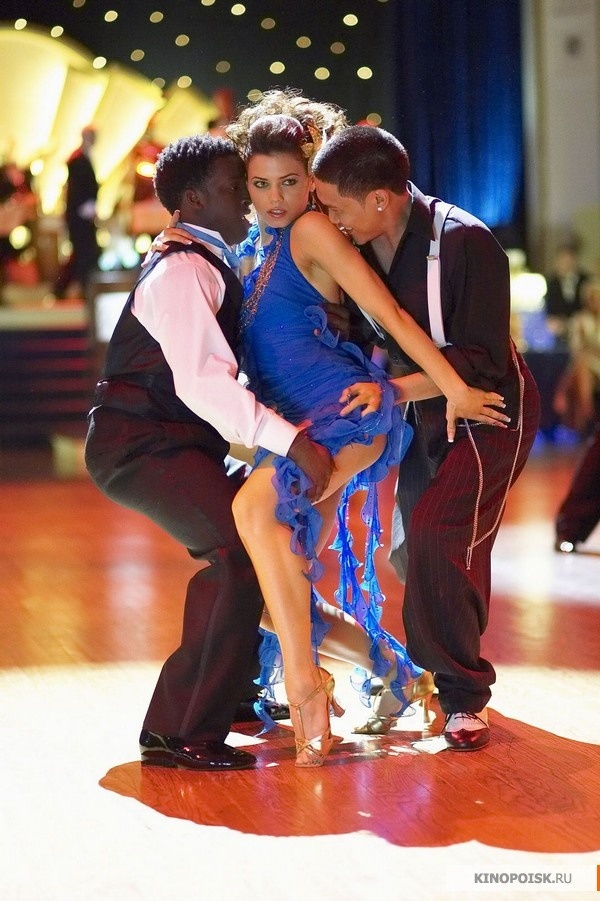 At the other end of the hall, Lucius was scowling at me, his face pressed against Millie's chest. I chuckled, against my will to restrain myself.
At the other end of the hall, Lucius was scowling at me, his face pressed against Millie's chest. I chuckled, against my will to restrain myself.
- The man at the table behind ours. Another one is on the far left. Do you see them? I twirled her slowly, she looked around the room, then pulled her back into my arms.
“Yes,” Maya said.
I counted them in my head, with difficulty, my memories of the battlefield were confused and hazy. “According to the vision I just had, there are at least fourteen more people, maybe fifteen. In addition, one strong mage. Airbender, I think. And Thoth is here.
Maya turned pale at these words. How does she know where to look for you?
- The devil knows. I turned her towards me. - It's getting worse. I thought of the throbbing pain in my chest, better than when I summoned the flames, but still worse than the first banquet I had experienced. “There is a problem with my magic. Maya backed away, almost stumbling. I gently caught her.
- When I tried to summon flames in my vision. This brought great pain. Vision was double, and something broke off.
Maya squeezed my arm almost painfully. — Niland. You are describing soul damage. Do you feel pain now?
- A little, yes.
— Why didn't you tell me earlier?
- I didn't understand what it was until... what I saw happened.
"Promise you won't use it again," Maya said firmly, focusing completely on me.
— … I can't, Maya. Not with what comes next.
“You can die.” Maya stepped closer to me. For a moment I lost my composure in her pleading gaze.
It was strange how much my perception had changed from that of a normal person. I was afraid of death, yes. But I also made peace with her. Death is inevitable. But for everyone else, it was an inevitable point. There was no return. I brushed that thought away, not allowing myself to think about Tamara and Sefura again.
- Okay, I promise. How can we fix this? I asked gloomily.
- There is no quick solution. Soul damage is not some simple thing that can be cured with a potion or healed with life magic.” Maya shook her head. “The Enclave can help if they agree to your proposal. Some of your human institutions might help, but I don't know anything about them. I only know the Enclave.
If the infernals decide to help, it will mean that I will begin to cooperate with them, becoming even more indebted. Badly. But it was a long-term problem, and now we need to deal with more pressing matters.
Sefur moved away from the table with Tamara and approached us. Somehow, even in the midst of the banquet, he knew something was wrong. This man's instincts were incredible.
- Can you give this to Sefur? I said quietly. Let him know the general situation. That my magic won't help. Let's meet at the duke's house at midnight.
The music has stopped.
Sefur came up to us and was about to open his mouth when I spun Maya and released her into his surprised embrace.
"Uh," said Cephur.
- Teach Maya this dance, will you? I smiled at him. I never liked fast dancing.
I left them and went to Tamara, who was drinking alone at her table. In the upcoming series of events, she played the biggest role.
I was walking down an alley a few streets down from where I first heard the quarrel between the duke and Tota. I was mechanically sorting through two copper rods in my pocket, trying not to think about what I was going to use them for.
Up to this point, everything was going pretty smoothly. With the guards provided by Lucius, the coup went quickly and smoothly, but it was a small town, so that was to be expected. Duke Desiric was being held hostage in his quarters, clearly unhappy with the development of events, but he handed over command of the city guards to Lucius and, by extension, to us. The group was relatively small. The guards were told to go about their usual duties and then meet us at the gate at the appointed time, a little after four in the morning.
It's been an hour and a half. Teeth chattered in the piercing cold.
Things could go in two different ways:
If Thoth appears first, it will be the worst outcome. Unlikely, but quite possible, since she has shown absolute unpredictability over and over again. In this case, we will suffer losses and flee back to Everwood.
If the thin man comes out first - sent by Tota to find out why the Duke is absent from the meeting - then the game will begin. It was impossible to win against Tota. But on the plus side, Tota didn't seem to want to get involved. She didn't show up at the ambush site, but this skinny man did. If he could separate her from her allies and make the whole thing seem more troublesome than it was worth, that might be enough to scare her away, at least for the time being.
Unfortunately, if everything works out, no one will come out clean. I have not forgotten how all three huntsmen looked at me, there was anxiety and uncertainty in their eyes.



